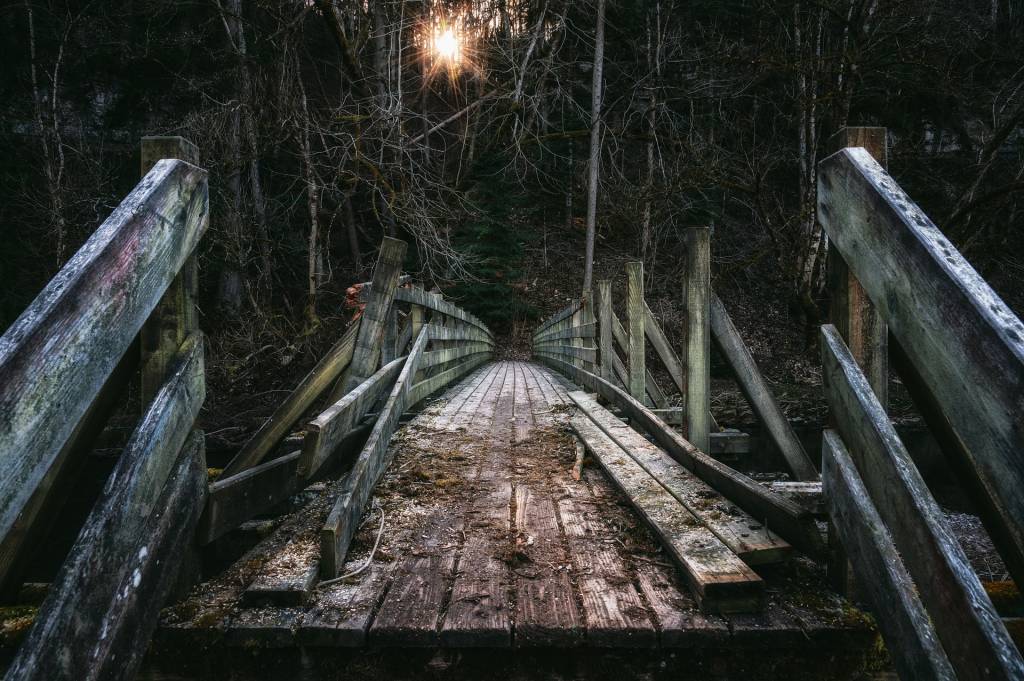Right now in Kentucky, there’s a big debate about an old bridge. It’s an important bridge; it connects Kentucky to Ohio right by Cincinnati and it carries about 180,000 vehicles across it daily (It was designed to carry 80,000). So much freight crosses that bridge that the value equals 3% of the national GDP; in other words, it’s a really important transportation asset for our economy.
Here’s the thing: It’s not doing so great. About a decade ago, pieces of the bridge starting breaking apart. There was a huge accident due to the narrow lanes and part of the bridge was burned. For nearly three decades, this bridge gets brought up in Congress as part of necessary infrastructure updates and for nearly three decades, partisan politics have kept anything from being done.
The bridge has become a barrier.

What was intended to serve the community has become a liability. Unless something is done soon, this bridge will not withstand the demands being placed upon it and someone is going to get hurt.
So why in the world are we still using it? I drove across it this week, following a school bus on which my daughter and her entire show choir team was traveling. I ,along with thousands of others, crossed that bridge twice in one day, going into Ohio and coming home to Kentucky. Why would I and so many others put ourselves in that danger?
Because, simply put, there is no alternative. The Ohio River lies between Kentucky and Ohio and it must be crossed. To use a different bridge would add an hour to the journey. So, I and all the other drivers choose to use the bridge to save time and follow the most direct route. And, we made it. We got through another day. But the bridge is still falling apart and eventually will not work.
If you haven’t figured out the analogy yet, let me spell it out for you.
In the 1950s and into the 1980s, age-specific ministries in churches grew exponentially. Designed to be a bridge to the younger generations, these ministries took on a culture of their own and soon the church was a series of ministries and programs aimed at certain ages and stages of life. By the 1990s, the existence of age-specific ministries, curriculum, activities, programs, and worship services as the norm became widely accepted.
But something started happening. In the early 2000s we became to observe the departure of a generation of churchgoers from our congregations. By 2010, we recognized a full-fledge departure of the Millennial generation from our faith communities and we were asking “Why, what is going on?” The bridge which had served us so well was showing some cracks.
The bridge had become a barrier.
What was intended to bring us together was actually starting to push apart. We might enter the same building on Sunday, but we all went our separate ways. We heard different sermons, studied different Scriptures, had entirely different social networks, and rarely if ever interacted with anyone outside of our bubble.
Now, blame can’t lie in the bridge alone. It was a good bridge when it was built. But it was built as an addition to the full congregational experience not a replacement for it. Just like the literal bridge between Kentucky and Ohio was built for 80,000 not 180,000, the bridge of age-specific ministries was intended to enhance not replace congregational life.
But over time, the bridge became a hinderance to rather than an enhancement. Sticky Faith from Fuller Youth Institute was one of the earliest research projects that examined why Millennials chose to stay in the faith rather than leave. In 2012, researcher Kara Powell shared, “The closest our research has come to that definitive silver bullet is this sticky finding: High school and college students who experience more intergenerational worship tend to have higher faith maturity” (Source).
Since that time, we have seen a continued decline in attendance from the rising generations and a continued reliance on age-specific curriculum and programs to the exclusion of intentionally intergenerational opportunities and approaches to worship and ministry. The bridge is no longer serving it’s intended purpose and it’s actually posing a danger to future travelers on the journey.
I wish that I could say I am being hyperbolic, exaggerating the danger posed by continuing to use an old bridge in a new landscape, but I don’t think that I am. We are in need of connection with each other, the kind of connection that leads to relationship, and the kind of relationships that lead to generational discipleship and lifelong faith formation. And it might mean, we have to take a detour, a longer route, one that is messier and takes more time and isn’t what we are used to. But, in the long run, one that leads to community and connection.
The bridge I drove over the other day is still technically working. But it is in desperate need of attention and repair. I would say the same of the church, on many levels, but especially in the area of discipleship and community.
It’s time to connect. To identify true bridges. To examine real barriers. To come together. To grow as one.



2 Comments
Jill Winter
Wow, I LOVE this website! It looks fantastic. You are amazing, Christina!
christinamembree
Thank you Jill! I’m so excited that you like it. I hope it is a resource for many churches and for generations to truly come together.